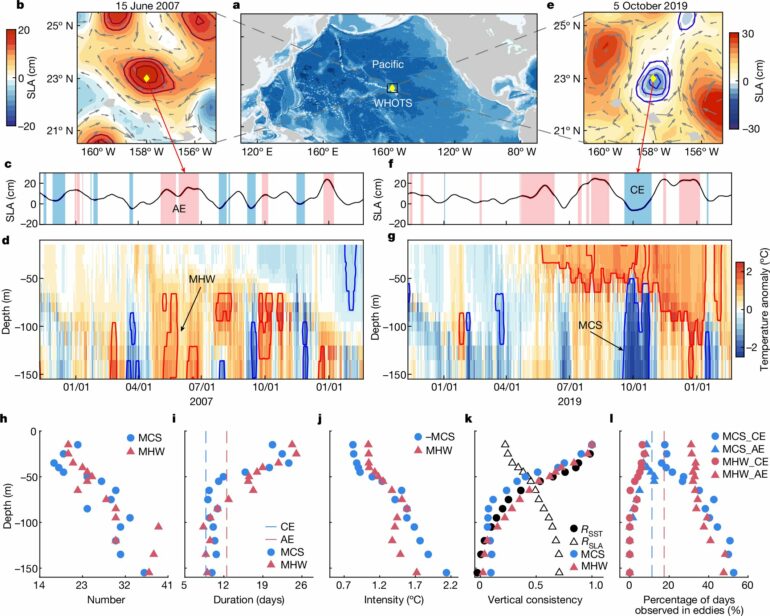While marine heat waves (MHWs) have been studied at the sea surface for more than a decade, new research published today in Nature has found 80% of MHWs below 100 meters are independent of surface events, highlighting a previously overlooked aspect of ocean warming.
The study was conducted by Australia’s national science agency CSIRO and the Chinese Academy of Sciences.
MHWs are prolonged temperature events that can cause severe damage to marine habitats, such as impacts to coral reefs and species displacement. These events are becoming more frequent due to global warming, with notable occurrences off Australia’s East Coast and Tasmania, as well as the northeast Pacific coast and North Atlantic.
Traditionally, MHWs have been tracked via satellite data focusing on surface temperatures. This new research indicates that deep-water heat waves may be significantly underreported, revealing a critical gap in our understanding of their full impact.
The world-first global analysis used observational data from more than two million ocean temperature profiles from our global oceans.
CSIRO’s Dr. Ming Feng said knowledge about subsurface events has been limited—until now.
“Our research reveals that MHWs are often hidden below the surface and occur separately to those on the surface,” Dr. Feng said. “The deep ocean is home to a range of marine life, including plankton and fish species. These findings deepen our understanding of the frequency and intensity of extreme temperature events under the ocean surface, and possible implications.”
The research also highlights the influence of ocean currents, in particular eddies, on MHWs, indicating they are a key driver of subsurface events.
“Eddies are swirling currents that alter the uptake, redistribution and storage of heat in the ocean. They play an important role in temperature variability,” Dr. Feng said. “Our findings show that MHWs at deeper depths are often associated with ocean eddies.
“Global warming has intensified temperature extremes in eddies in our oceans in the past decades, mostly due to an increase in energy residing in eddies. This could result in more frequent and severe MHWs below the surface.
“In the East Australian Current region, data from Australia’s Integrated Marine Observing System reveals more than 70% of MHWs below the surface occur in ocean eddies.”
Ocean eddies can impact acidification, oxygen levels and nutrient concentrations in the ocean. Understanding the drivers of subsurface MHWs, such as eddies, will help better assess these events in a warming climate, and help to predict them in the future. This research will also help increase our understanding of MHW impacts to the life cycle and distribution of marine organisms.
More information:
Haigang Zhan, Common occurrences of subsurface heatwaves and cold spells in ocean eddies, Nature (2024). DOI: 10.1038/s41586-024-08051-2. www.nature.com/articles/s41586-024-08051-2
Citation:
Global temperature analysis reveals deep ocean marine heat waves are underreported (2024, October 16)



